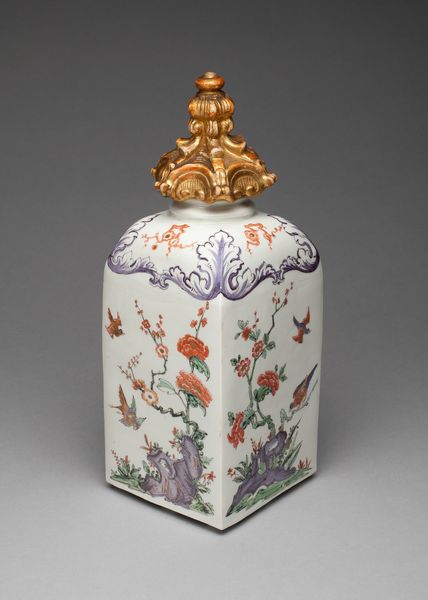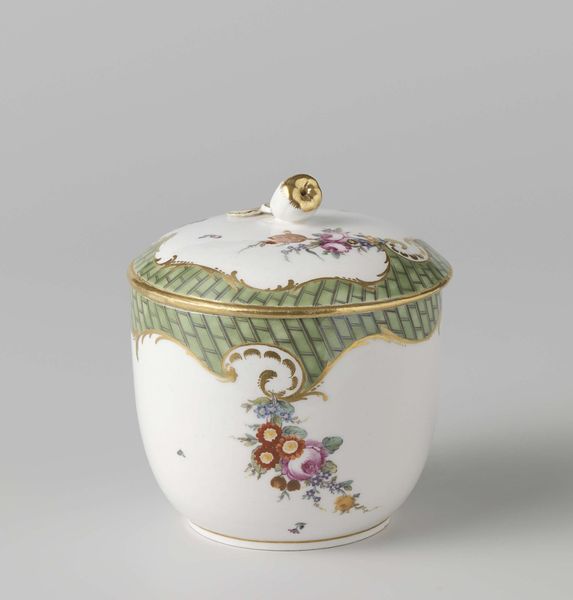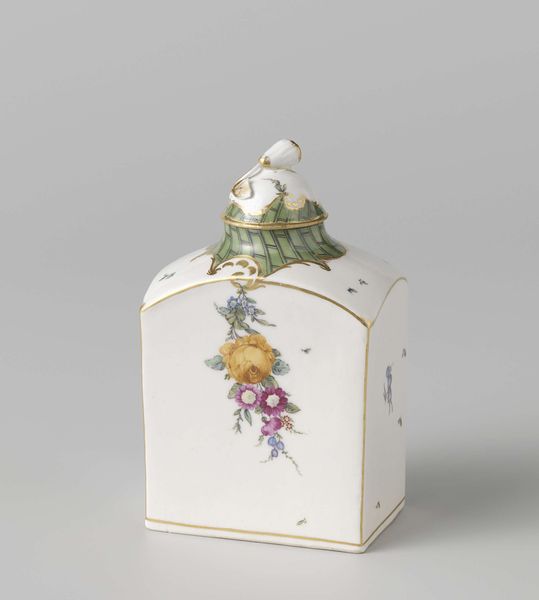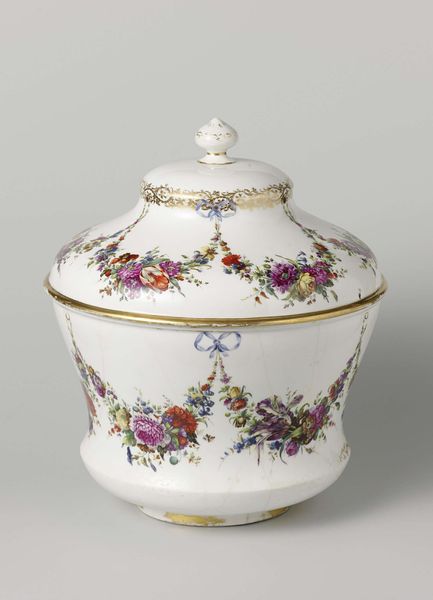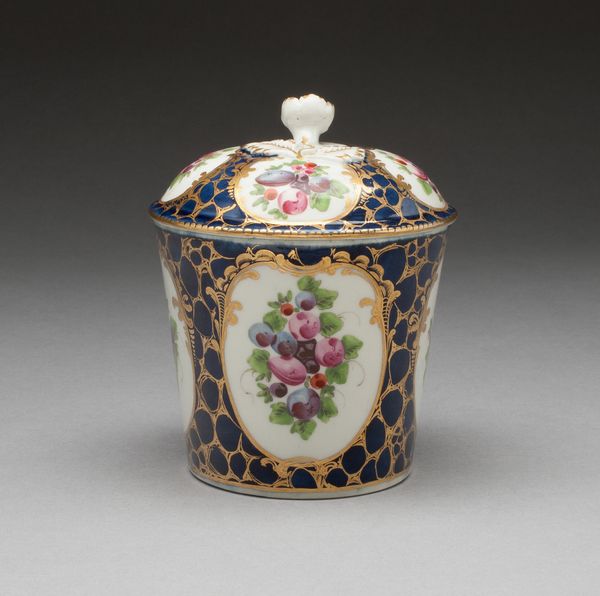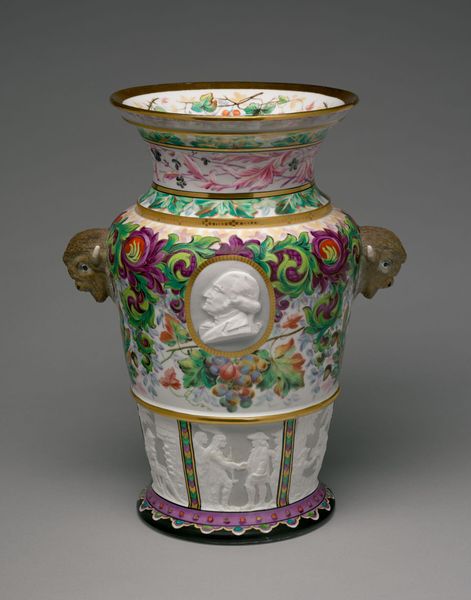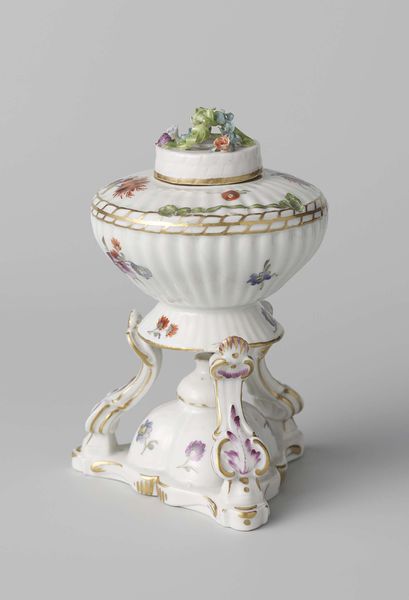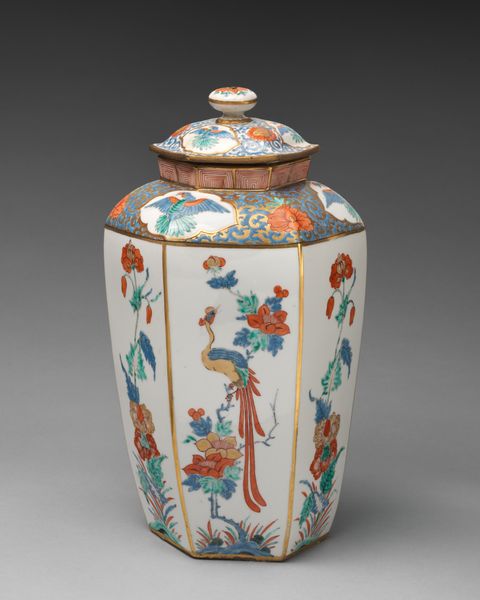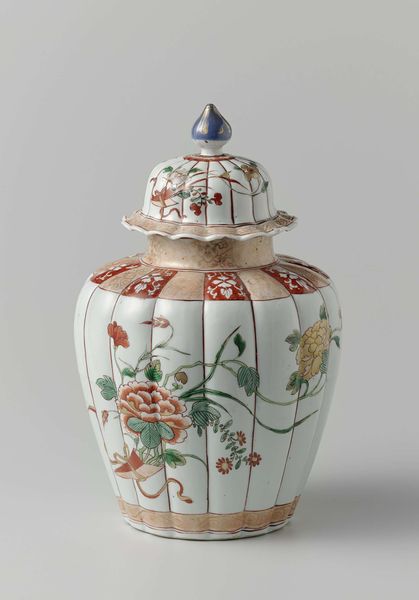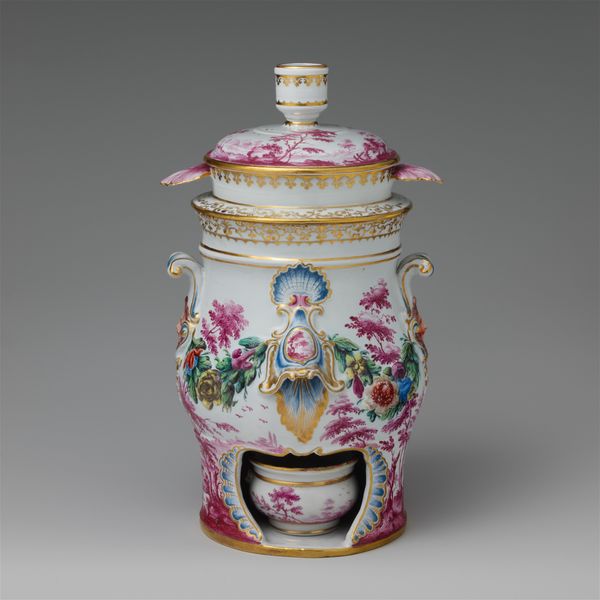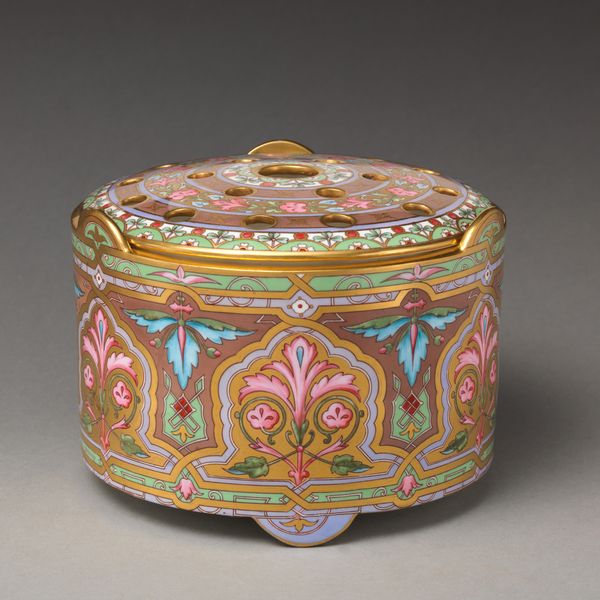
ceramic, porcelain, sculpture
#
ceramic
#
porcelain
#
sculpture
#
ceramic
#
decorative-art
#
rococo
Dimensions: Overall (confirmed): 15 9/16 x 6 5/16 x 6 11/16 in. (39.5 x 16 x 17 cm); Insert: Overall (confirmed): 8 9/16 x 4 1/4 x 3 1/2 in. (21.7 x 10.8 x 8.9 cm); Other (without cover): 11 in. (27.9cm)
Copyright: Public Domain
Editor: Here we have a food warmer with insert, made between 1725 and 1740 in Vienna. The medium is ceramic, or more specifically, porcelain. I find the ornamentation particularly striking, the floral designs feel playful but there’s something unsettling about the figures placed near what seems to be a cage-like structure on the warmer itself. What stands out to you? Curator: It's that dissonance you're picking up on that intrigues me as well. This piece, situated within the Rococo period, embodies a superficial embrace of nature through the floral motifs, a decorative veneer obscuring deeper societal structures. Consider those figures—they’re decorative, almost dehumanized, and the cage-like structure reinforces an unequal distribution of comfort and luxury. Editor: So, it's more than just a pretty object? Is there a critique embedded here? Curator: Absolutely. While appearing delicate and refined, this food warmer exists within a context of stark class disparities. Porcelain, at the time, was a symbol of extreme wealth and power. The figures and decorative floral elements may represent marginalized communities being molded and contained by dominant, patriarchal narratives. Editor: I never would have considered those implications looking at the piece at face value. Curator: Exactly. We must interrogate art history through an intersectional lens. The piece compels us to question who had access to warmth, comfort, beauty, and power in 18th-century Vienna. We have to reflect on art’s relationship with privilege and systems of oppression. Editor: This makes me rethink decorative arts and consider what stories they tell. It challenges the view of the past as this glorified age, especially as class and race implications can now be revealed through critical studies of the arts. Curator: Precisely, looking closer uncovers a far more nuanced and uncomfortable truth, pushing us to critically analyze art's role in both reflecting and perpetuating power dynamics.
Comments
No comments
Be the first to comment and join the conversation on the ultimate creative platform.
